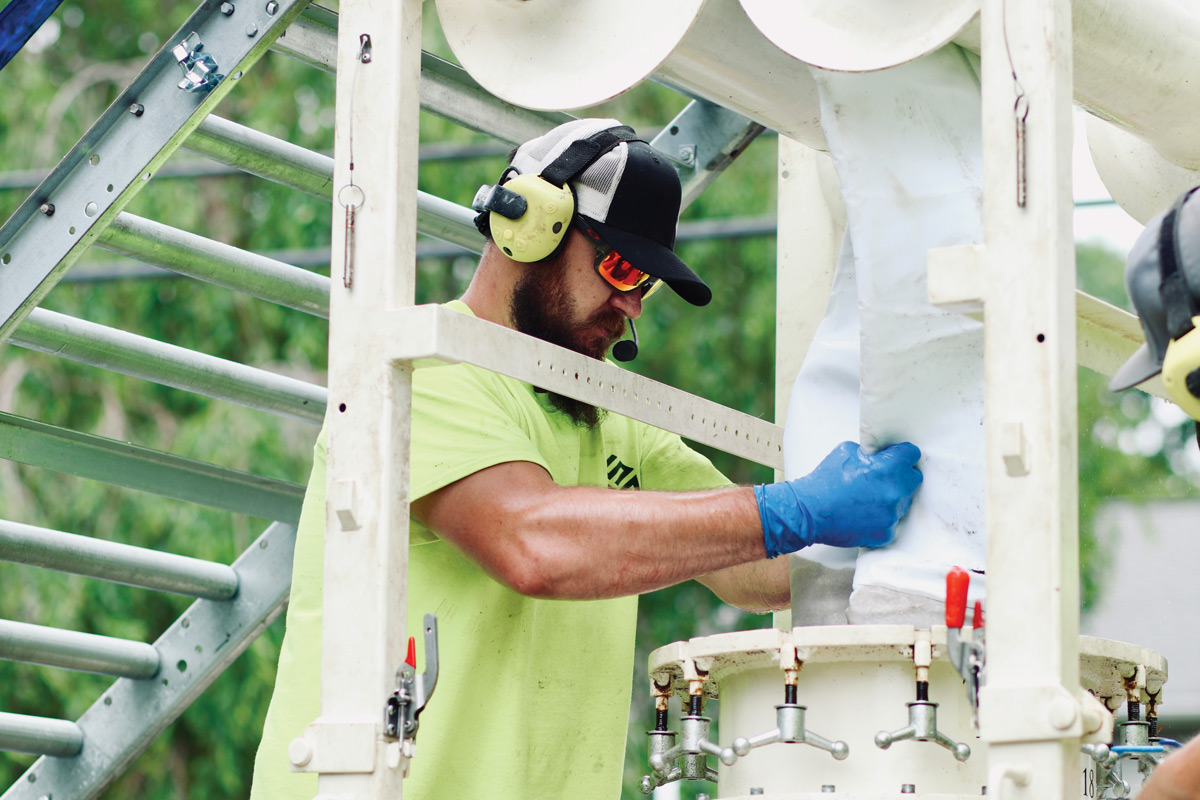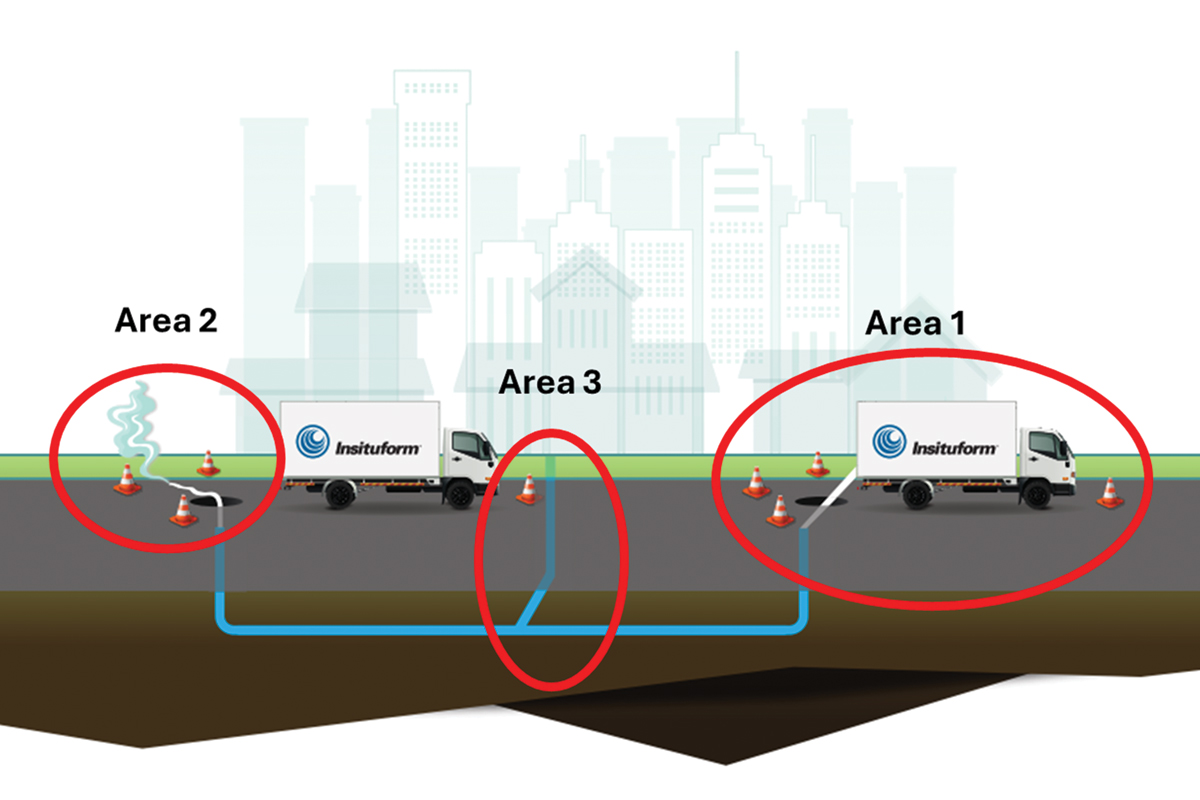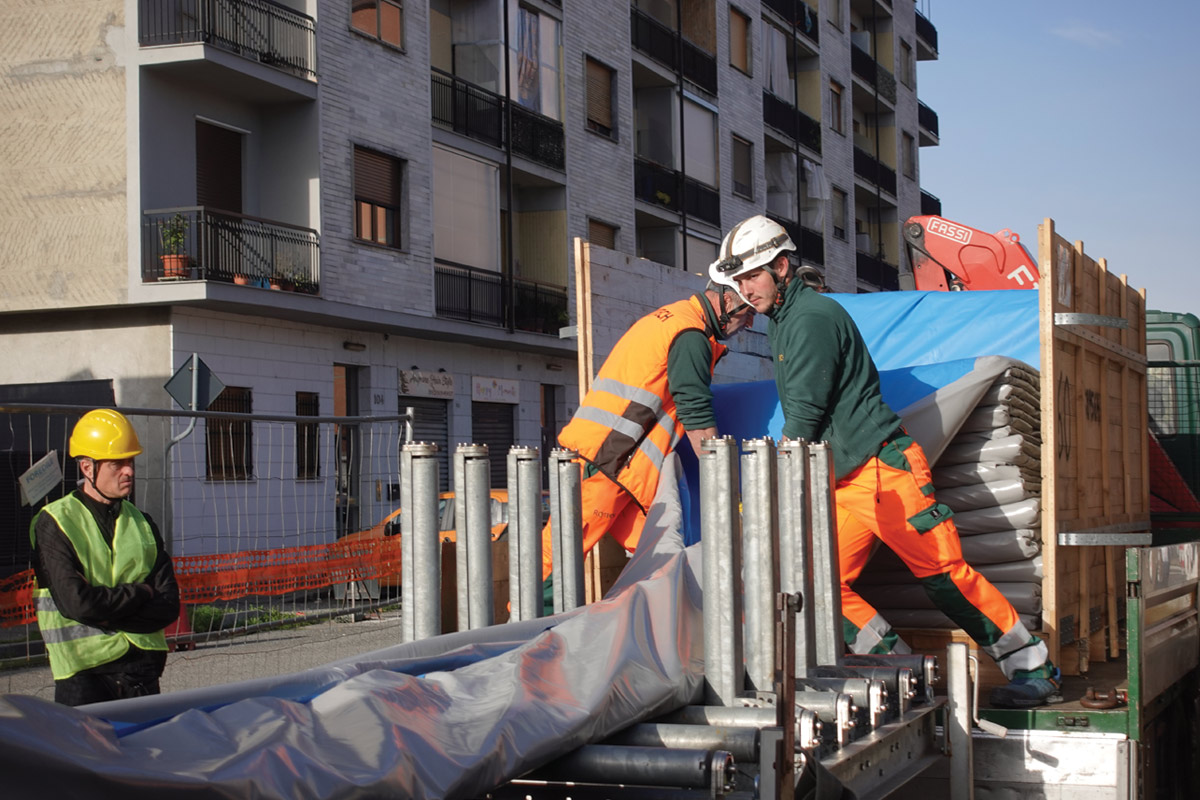
Communicating with the Gallery Key to Winning Community Relations Play On Difficult CIPP Golf Course Project
July 30, 2015

Just like a winning professional golfer, a contractor must prepare by analyzing and planning up front then adjusting for actual course conditions.
For trenchless technology companies, a key selling point is the ability to rehabilitate pipelines without disturbing or disrupting surrounding areas. Usually that means performing the project quickly and efficiently, so that the work zone does not affect the system’s end users. In other cases, that means not harming the environment and leaving the area virtually untouched.
Once in a while, a project comes along that’s large in scope, located in a highly visible location and where disruption is simply not an option. That was the case for the St. Louis Metropolitan Sewer District (MSD) when it found it had an established, upscale golf club running over a major section of its system.
There’s an old adage: The bigger the project, the bigger the challenge. In sewer rehabilitation, that saying definitely rings true. Due to the sheer scope of a large project, a contractor will often face challenges and unforeseen problems that are not encountered on a small job. Often, large projects will include unique tasks that also come with bigger price tags, which can increase the risk for the contractor that is willing to take on the challenge. Equally important: As the front line “face” of its municipal customer, a contractor must be able to capably address issues that not only have the potential to affect cost, but that may also disaffect the taxpaying public.
That was the scenario O’Fallon, Mo.-based SAK Construction faced in completing a 101,423-lf infrastructure repair for MSD utilizing cured-in-place pipe (CIPP) technology. The $5.39 million contract came with a variety of problematic installation issues, in particular a 5,275-lf bypass of 27- to 42-in. sewer pipe that originated on one of the oldest private golf courses in the metro St. Louis area — Old Warson Country Club — and terminated in a decidedly upscale residential neighborhood in one of the region’s most exclusive municipalities, Ladue. It was not a simple in-and-out job by any means. It was a job that would take several challenging months to complete and would require SAK to get creative to make sure the needs of all parties were addressed.
Getting Creative
Among the more interesting challenges SAK faced was simply getting to the construction location with its equipment. As one can imagine, driving heavy equipment across a pristine golf fairway was not acceptable. SAK went the extra mile and constructed a temporary road to circumvent the area of play so that equipment could be transferred to the manhole without disturbing the course. Play continued around the rehabilitation work for the duration of the project.
“From time to time, you encounter a worksite that you just can’t easily access, so you have to improvise and make the necessary adjustments,” said SAK project manager Tim Bussen. “Often with large line installs you have to recognize unique challenges and adapt to the surroundings of each jobsite.”
Leveraging its experience with the CIPP process, SAK installed the large diameter CIPP liner into existing sewers below the golf course and neighboring community. The new liner was then cured with heated water, setting the resins and sealing the new “pipe-within-a-pipe.” SAK’s CIPP installation is trenchless as it utilizes existing manholes to access the pipe. This method allows communities like Ladue to avoid the high cost, hassle and risk of open-trench construction. This is especially important when the rehabilitation is done in areas where digging up the ground is simply not an option.
Despite the difficult specs and location of this project, SAK was able to attack the “front nine” with the confidence that comes from knowledge and years of experience. SAK’s leaders, who are literally founders of the CIPP industry, have tackled these types of challenging jobs before over 30-plus years and tens of millions of feet of pipeline rehabilitation. Mindful that the watchful eyes of the community would be observing their every move, SAK recognized that its reputation was being put to a stern test.
“One of our biggest concerns was wearing out our welcome in the neighborhood,” said Bussen. “Generally, homeowners will see us in the morning when they leave for work, and we’re gone for good before they get back home for dinner.”
However, this project involved large diameter installations that would take place over the span of several days, which required SAK workers to leave their equipment set up during the process. Further, all access points to the sewer lines being rehabilitated were located either in resident’s backyards or on the golf course, which made working around the clock (and around the public) even more difficult.
In collaboration with MSD, SAK made the decision to tackle the issue head-on by proactively communicating directly with home owners affected by the work. The project management team felt that preparing the public and setting realistic expectations would provide the understanding needed to give its installation crews a “mulligan” if needed during the process. After sending a letter advising homeowners of the project before the start of work, Bussen and members of his team went door-to-door to personally answer questions and alleviate resident concerns. They also shared the steps SAK would be taking “above and beyond the norm” to hasten its departure (around-the-clock workdays) and to minimize disturbance (silenced pumps to cut ambient noise at night).

For trenchless technology companies, a key selling point is the ability to rehabilitate pipelines without disturbing or disrupting surrounding areas.
The special attention wasn’t solely focused on the front end of the assignment. When the work was complete, SAK made the extra effort to restore all disturbed areas to their original condition and to the full satisfaction of residents. Bussen stated: “We appreciated and valued the cooperation it took on the part of the home owners and wanted to make sure that their grounds looked as good at the end of our stay as they did the day we arrived.”
The extra care and planning definitely paid off. Residents welcomed SAK’s considerate actions and the proactive communication was a major reason why MSD officials reported receiving zero complaints during the multi-month project. Tim Bacich, a resident whose back yard was used by SAK as a base camp during the bypass phase, said: “SAK personnel were very professional throughout the project and their constant, open communication with us made a difficult situation bearable. We really appreciated their efforts to keep the interference to the surrounding area and residents to a minimum.”
Likewise, MSD also appreciated the extra effort that SAK made to represent the agency well in the community. Steve Welnick, a division inspector with MSD, praised the initiatives saying: “SAK really understood what it would take to manage this high-profile project, not only from a project performance point of view, but also from a community relations standpoint. We were very pleased that they were able to leave the jobsite literally undisturbed. That wasn’t an easy task given the larger diameters and demanding locations where they were required to work. We’re very happy with the outcome.”
A second assignment SAK had in the same neighborhood in 2014 posed similar challenges. However, the extra lengths SAK’s team went to satisfy the homeowners on the original project made the second one go that much smoother. The homeowners were familiar with the crews and knew that in the end, SAK would go the extra mile to make sure things were handled right over the course of the work. Essentially, SAK was allowed to “play through” because of the reputation it earned on the first round of work.
Overall, planning and communication were the keys to SAK delivering a very successful project to its client. One can’t underestimate the rewards of upfront work on creating an environment for success. Just like a winning professional golfer, a contractor must prepare by analyzing and planning up front … then adjusting for actual course conditions.
Jim Kalishman is chief information officer for SAK Construction LLC, based in O’Fallon, Mo.




